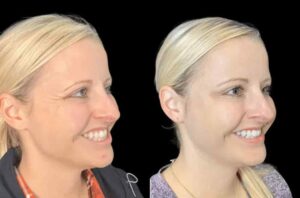
Choosing the right educational path for your child is a big decision. In the USA, parents are increasingly exploring alternatives to traditional schooling. One of the most popular options is the Montessori school. Known for its child-centered approach, the Montessori method encourages independence, creativity, and a love of learning. This guide explains what Montessori schools are, how they work, and what parents should know before enrolling their child.
What Is a Montessori School?
A Montessori school is an educational institution that follows the teaching philosophy of Dr. Maria Montessori. This approach is based on the belief that children learn best in an environment that promotes self-directed activity, hands-on learning, and collaborative play.
In a Montessori classroom, children are free to choose tasks that interest them, within structured guidelines. Teachers act as guides rather than traditional lecturers. The focus is on fostering a child’s natural curiosity rather than imposing a one-size-fits-all curriculum.
The Montessori Method Explained
The Montessori method has several core principles:
- Child-Centered Learning – Lessons are tailored to each child’s interests and developmental stage.
- Prepared Environment – Classrooms are organized to encourage exploration and independence.
- Mixed-Age Groups – Children of different ages learn together, helping younger students learn from older peers.
- Hands-On Materials – Specialized learning tools are used instead of rote memorization.
- Freedom Within Limits – Students can choose activities but must follow classroom guidelines.
This method encourages independence, problem-solving skills, and respect for others.
History of Montessori Education
The Montessori method was developed in the early 1900s by Dr. Maria Montessori, an Italian physician and educator. She observed that children learn best when given freedom in a supportive environment. The first Montessori school opened in Rome in 1907.
In the USA, Montessori education gained popularity in the 1960s and has grown steadily. Today, there are thousands of Montessori schools across the country, both private and public.
Montessori Schools in the USA
Montessori schools in the USA can be found in almost every state. They vary widely in size, cost, and curriculum details, but most share the same core principles. Some schools follow American Montessori Society (AMS) or Association Montessori Internationale (AMI) guidelines, while others adapt the method to suit local needs.
Montessori education is offered at multiple levels:
- Infant and toddler programs (birth to age 3)
- Primary programs (ages 3–6)
- Elementary programs (ages 6–12)
- Adolescent programs (ages 12–18)
Benefits of a Montessori Education
Montessori schools are known for providing a range of benefits:
- Encourages independence – Students manage their own learning and responsibilities.
- Promotes critical thinking – Activities focus on problem-solving and decision-making.
- Supports individual learning pace – Children progress at a speed that suits them.
- Fosters social skills – Mixed-age classrooms encourage cooperation and empathy.
- Builds intrinsic motivation – Students learn because they enjoy the process, not for rewards.
Montessori vs. Traditional Schooling
Many parents wonder how Montessori education differs from traditional schooling.
| Feature | Montessori School | Traditional School |
| Teaching style | Student-led, teacher-guided | Teacher-led |
| Classroom structure | Mixed-age groups | Same-age groups |
| Learning pace | Individualized | Standardized |
| Assessment | Observations, portfolios | Grades, tests |
| Materials | Hands-on, sensory-based | Textbooks, worksheets |
Montessori education focuses on the whole child, not just academic performance.
How to Choose a Montessori School in the USA
When looking for a Montessori school, consider:
- Accreditation – Check if the school is recognized by AMS or AMI.
- Teacher Training – Montessori teachers should have specialized certification.
- Classroom Environment – Look for a well-organized, calm, and engaging space.
- Student-Teacher Ratio – Smaller groups allow for more personalized attention.
- Parent Involvement – Many schools encourage active parent participation.
Visiting the school and observing a class can help parents make an informed choice.
Cost of Montessori Education in the USA
The cost of Montessori schools varies widely. Private Montessori tuition can range from $5,000 to $15,000 per year for preschool, and more for elementary or secondary programs. Some public charter Montessori schools offer free tuition but may have waiting lists.
While tuition can be higher than traditional schools, many parents see it as an investment in their child’s future.
Misconceptions About Montessori Schools
There are several myths about Montessori education:
- “There’s no structure” – Montessori classrooms have clear rules and expectations.
- “It’s only for gifted children” – The method is suitable for all learning styles.
- “It’s too expensive” – Public Montessori options exist in many areas.
Is Montessori Education Right for Your Child?
Montessori education works well for children who are curious, independent, and enjoy hands-on learning. However, it may not be the best fit for every child or family. Some students may thrive better in more structured, traditional environments.
Conclusion
Montessori schools in the USA offer an alternative to conventional education, focusing on independence, exploration, and respect for the child’s natural development. By understanding the philosophy, benefits, and challenges, parents can make a more informed decision about whether this approach is right for their family.

